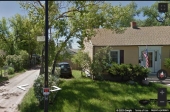
 6
6




 3
3





 2
2





"Also, just as you want men to do to you, do the same way to them" (Luke 6:31)
 2
2




"The world is changed by your example, not your opinion." ~ Paulo Coelho
 4
4




Work smarter, not harder.
 1
1




 1
1








Visit Redhawk's soil series: https://permies.com/wiki/redhawk-soil
How permies.com works: https://permies.com/wiki/34193/permies-works-links-threads
 3
3




 1
1




Lyda Eagle wrote: Lots of great ideas on thing to plant. My best advice is don't think food forest (even though that is the goal) think Landscaping! The biggest problem that cities/neighborhoods have with front lawn gardens is that the LOOK like a garden. People put them in straight rows or have raised beds (in straight rows). Think like you would if you were just putting in a few trees and bushes with some flowers. Have curving lines and no straight rows. Just because you are going to eat it doesn't mean it must look like a garden. There are so many beautiful plants that are edible that there is no reason for it to look anything but beautiful. I think asparagus looks as great as any decorative grasses that people plant just put them in a staggered "clump" with some lower growing edibles in front. There are also many edibles that come in other colors besides green. There is a really great Plum that the leaves are a dark red as well as the fruit. It is a beautiful tree even without the fruit.
There are many edible and medicinal flowers that are perennial that could be included. This also helps the bees since even those that plant flowers tend to put pesticides on them. You could also add some annuals in as well,like multi-colored lettuces or rainbow chard. Even having some things in big pots can add to the "decorative" vibe and if you wanted to grow things that might need a warmer climate they could be taken indoors in colder months. I am so glad you are doing this and hope more follow your example!!!
 1
1





|
It's never done THAT before. Explain it to me tiny ad:
Switching from electric heat to a rocket mass heater reduces your carbon footprint as much as parking 7 cars
http://woodheat.net
|


